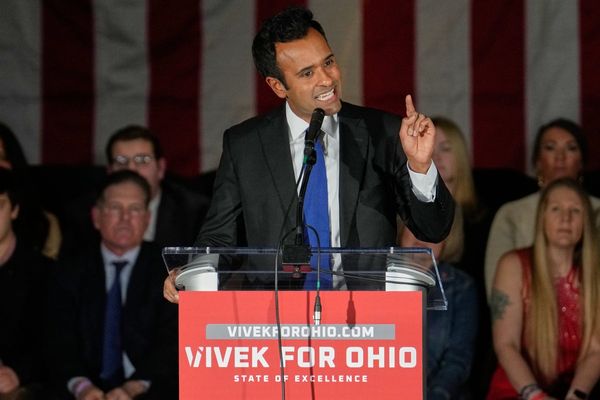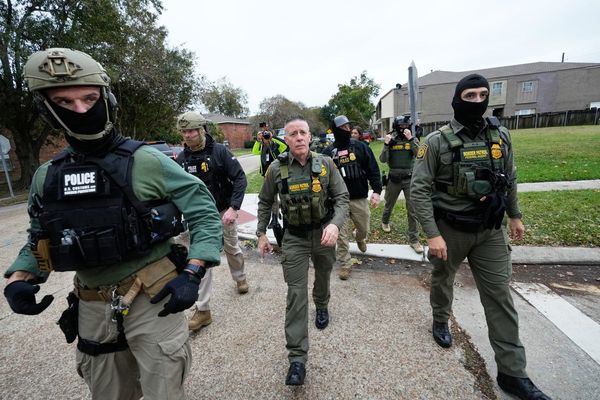Democratic gubernatorial candidate Wes Moore has proposed a one-year public service option for young Marylanders who graduate from high school without a plan for college or the skills they need for a good job. His proposal for a “service year option” came up during a recent wide-ranging interview at The Baltimore Sun. The following questions and answers have been edited for brevity and clarity. (An interview with Dan Cox, the Republican candidate endorsed by former President Donald Trump, is being arranged.)
Q: You support an amendment to the Maryland Constitution establishing a right to an abortion, correct?
A: We need to send a very clear message that Maryland is going to be a safe haven for abortion rights. Regardless of what Trump’s Supreme Court judges believe, we need to make sure that people in Maryland know that we’re going to ensure that both patients and providers are going to feel safe doing something that is health care.
Q: Your campaign emphasizes having strong public schools. But hasn’t the heavy lift on that already taken place with the passage of the multibillion-dollar Blueprint for Maryland’s Future?
A: The Blueprint is funded in the early years, through 2026. It’s the out years that are the question. My commitment is that it is going to be fully funded, and it’s going to be fully funded because I believe in it. And I don’t believe in one tenet, I believe in all of the tenets of the Blueprint.
Every one of the answers I come to is because of data. I always say, ‘As a leader I am data-driven and heart-led.’ I wear my heart on my sleeve and I acknowledge that. But I know that data matters, and data continues to show that 80% of brain development happens in a child by the time that child is five years old. Why we have children starting school at age 5 makes no sense. So we have to have pre-K for every child in need.
We know we have to increase the pipeline for educators of color inside of our classrooms. For the first time in our state’s history the majority of children inside Maryland classrooms are children of color. So we need to have an educator core that helps to reflect that. Again, it’s not emotion, its data. Data shows the more we can introduce educators of color to our classrooms, it’s not just children of color who do better, but all children who do better. I believe our children deserve a 21st Century education, that the greatest economic engine we can provide is ensuring that our children are going to be able to participate in a future economy.
Q: You propose a service year option for students who aren’t sure what to do after high school graduation. How would that work?
A: They would all have a chance at a paid year of service to the state. I think it helps to address the college affordability crisis. I’m a big believer in experiential learning, and in this time of political divisiveness it’s public service that will help to save us. High schools had a pendulum swing far too swift when we started evaluating them based on things like four-year college acceptance rates. That’s not the path for every kid. We are going to be the first state in the country to provide a service year option for every high school graduate. What we’ll do is partner with nonprofits, community organizations and social enterprises, and the student can choose. That person does a year of service — it can be in housing, in the environment or in education — and they receive things like financial literacy, opening bank accounts, all things they need to be successful in the transition to adulthood. At the end of the year, we’re going to provide financial incentives for whatever they want to do next — a two-year school, a four-year school, a trade or apprentice program — to help defer the cost that they’ll have.
Q: Sounds good. Sounds costly. Would the state provide the wages?
A: The paid service year option would be funded by bringing together state, federal and private sector resources, including leveraging resources from the federal AmeriCorps program.
Q: On climate change, the General Assembly has already accomplished a lot in goal-setting for reducing carbon emissions. What more do you propose?
A: If you look at our campaign, we’re talking about 100% clean energy by 2036, net zero carbon emissions by 2045. Every state vehicle by the end of my second term is going to be an electric vehicle. We’re going to focus on the electrification of the grid. We’re going to leverage our universities to focus on solar and wind technologies, and solar and wind entrepreneurship. That will also help to address the racial wealth gap [the difference in household assets between whites and people of color] because we’re going to invest in entrepreneurs, specifically entrepreneurs of color, to help build out their enterprises.
They are aggressive goals, but the only way we’re going to accomplish what we need to accomplish is by being aggressive. We have to make our state more competitive while also making it more equitable. We have to close the racial wealth gap, which right now in Maryland is 8-1, and we have to address the issue of climate. Not only is it an existential threat, we are looking at something that has cost the state over $10 billion over the past decade. We’ve got to take this seriously.
———







